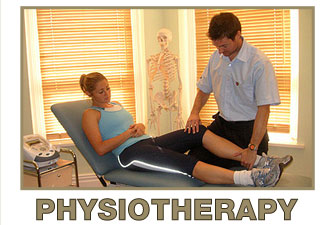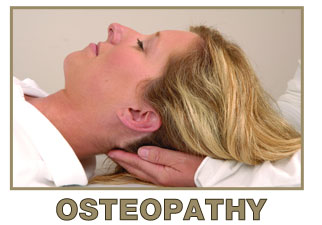Case Studies



Physiotherapy Case Studies
Osteopathy Case Studies
Physiotherapy Case Studies
Headaches
| Patient Info | Girl, 15 years |
| History | Patient started to have headaches 3 years ago. She complains of pain above her eyes that usually comes on in the afternoon and lasts up until bedtime. She generally has headaches 2-4 times per week. |
| Observation Evaluation |
|
| Anatomical and Physiological Relevance |
|
| Course of Treatment | Patient had 4 weekly sessions of therapy with focus on mobility of the skull and blood supply to the brain. A month later she was given another session and was scheduled for a follow-up in 6 months. |
| Outcome | At the end of the first month patient reported feeling 80-90% better. She said that over the last week she only had 1 mild headache. During follow-up a month later she felt great and only had 2 headaches during previous month. Her condition continued to improve and she was headache-free half a year later. |
Low Back Pain Radiating into L-Buttock
| Patient Info | Female, 56 years |
| History | Low back pain that has been getting worse over the past 6 months. Currently pain is really bad, especially in sitting. Patient works at a computer and has to sit for prolonged periods of time at work every day. She also complains of pain at night when she falls asleep, or when she has to turn over. |
| Observation Evaluation |
|
| Anatomical and Physiological Relevance |
|
| Course of Treatment | Patient was given a total of 13 sessions. Initially she was seen twice a week for 3 weeks. During the first two sessions treatment focused on her sacrum and lumbar spine. The following week kidney was corrected, and then spinal (dural) membranes and neural rootlets were decompressed. Each osteopathic treatment was conducted in conjunction with a massage to release muscle tension and allow for quicker healing. After the 6-th session she reported that the pain was improved almost 50%. She continued weekly treatments for another 6 sessions and came for a follow-up two months later. |
| Outcome | 2 months later patient reported being totally pain-free. |
R-Sided Neck and Shoulder Pain
| Patient Info | Female, 46 years |
| History | Patient presented with complaint of R neck and shoulder pain that keeps getting progressively worse over the last year. Recently she started to have difficulty lifting R arm up. |
| Observation Evaluation | On evaluation patient was found to have restriction in the left lung, ribs and neck area. |
| Anatomical and Physiological Relevance |
|
| Course of Treatment | Patient had 9 sessions of therapy with focus on the position and mobility of ribs, heart and lungs. Patient was also given exercises to improve shoulder mobility and strength. |
| Outcome | After 3 sessions patient reported improvement in pain. After 9 sessions patient reported that her pain improved 95% and she was able to fully use her shoulder. |
Scoliosis
| Patient Info | Boy, 9 years |
| History | Patient first discovered that he had a mild thoracic scoliosis 3 years ago, when he had an X-ray for a pneumonia. He has been followed by an orthopaedic surgeon, and apparently the curve has not progressed over the past three years. Recently he started to spend a lot of time on the computer and his parents noticed that in addition to scoliosis, he now started to develop a forward-curved posture with elevated shoulders and caved-in chest. |
| Observation Evaluation |
|
| Anatomical and Physiological Relevance |
|
| Course of Treatment | Parents were educated regarding the position at the computer. They were advised to elevate the screen and not allow their child to play computer games on a laptop on the couch, but rather on a table. Patient had 4 weekly treatments aimed to improve spine flexibility and correct vertebral position. He was treated with manual therapy, ribs stretches to open up the chest and breathing exercises. Afterwards he was followed monthly for 4 months to maintain and augment the progress. |
| Outcome | Noticeable difference in his posture was visible after the third session. One month later parents reported that their son's teachers commented on the improvement of his posture. The improvement was maintained during the three months of follow-up, after which patient was discharged and given an instruction to come back in one year for a follow-up. |
TMJ Pain
| Patient Info | Female, 26 years |
| History | Patient presented with pain and clicking over the left TMJ joint that has been there for at least half a year. Patient reported not being able to fully open her mouth. She took 4-6 extra strength tylenos per day for pain and wore a bite guard at night. Pain was described as sharp, constant and evoking headaches. |
| Observation Evaluation |
|
| Anatomical and Physiological Relevance |
|
| Course of Treatment | Patient was given 5 weekly sessions with the focus on releasing the mandible (jaw) and the trigeminal ganglion. Membranous tension inside the skull was corrected, and normal blood supply to and from the TMJ joint was restored. |
| Outcome | Patient reported significant improvement after the 3rd session. During the 5th session her mouth opening was measured to be almost twice of the initial, however she complained of a recent onset of headaches. She was seen 4 more times after that and reported full resolution of both the headaches and her TMJ pain at the end of treatment. |
Osteopathy Case Studies
Constipation and Abdominal Cramps
| Patient Info | Boy, 12 years |
| History | Frequent upset stomach with bouts of constipation and diarrhea for as long as he can remember. The last bout of constipation was so bad, that he had to miss 2 days of school. |
| Observation Evaluation |
|
| Anatomical and Physiological Relevance |
|
| Course of Treatment | Patient was given a total of 11 sessions. Initially he was seen 5 times with a weekly interval. Treatment focused on releasing colon mobility and innervation. Neck and Lumbar lesions were corrected, and sympathetic trunks were released. Patient reported significant improvement at the end of the first month, and was put on a biweekly schedule for the second moth, after which treatment was continued monthly 4 more times. |
| Outcome | Patient was reporting improvement throughout the course of treatment. At discharge he stated that the problem was 80-90% resolved. He was very happy with the outcome. Patient was advised to continue maintenance treatment of 1-2 sessions every 6-8 months to maintain his status. |
Diarrhea (Baby)
| Patient Info | Boy, 1.5 years (infant) |
| History | Patient's mother brought him in because she was unable to stop his diarrhea over the past few days. She said that they are trying some new foods, and apparently the baby is not reacting well to beans/sweet peas. They stopped the peas, but he has a loose green bowel movement after every feeding/bottle. |
| Observation Evaluation |
|
| Anatomical and Physiological Relevance |
|
| Course of Treatment | Patient was given 1 session targeting liver position and function, and circulation of lymph around the smaller intestine. |
| Outcome | Parents reported that the next day after treatment baby's diarrhea stopped. The colour and texture of stool normalized over the next 4-5 days. |
Ear Infections
| Patient Info | Boy, 2.5 years |
| History | Patient's mother brought him to our office for recurrent ear infections. Patient had 3 ear infections during preceding 2 months. Each time he was treated with a course of antibiotics. |
| Observation Evaluation | Patient was found to have poor vitality of the small intestine, decreased lymphatic activity, restriction of membranes inside the head and restricted mobility of L temporal bone (the bone that hosts the ear). |
| Anatomical Relevance |
|
| Course of Treatment | Patient was given 3 manual treatments 1-2 weeks apart. The goal of treatment was to improve circulation and lymphatic function of the whole body, and especially head and neck. A month later he was given another session targeted to maintain his improvement and augmentcirculation and lymphatic delivery to the ear area. |
| Outcome | One week after the first session, patient had the last ear infection, which resolved within a week. Half a year later patient's mother reported that the child is doing very well, and did not have another infection over the last 6 months. |
Nose Bleeds
| Patient Info | Boy, 14 years |
| History | Patient has 1-2 severe nose bleeds per week. He says that he loses a significant amount of blood every time and his shirt and Kleenexes are covered in blood during each episode. |
| Observation Evaluation |
|
| Anatomical and Physiological Relevance |
|
| Course of Treatment | Patient had 4 sessions of therapy over 6 week period with focus on releasing the neck and head structures, including connective tissue, intracranial membranes and passageways of arteries and veins in and out of the skull. |
| Outcome | At the end of treatment patient reported 1 nosebleed over the last month. 4 months later he stated that he only had one more nosebleed after finishing his treatment. |
Unresolving Infection
| Patient Info | Female, 38 years |
| History | Patient has been sick for almost 4 weeks. Initially she had a high fever, which came down after about a week. However she continued to have congested sinuses with headaches, a general feeling of malaise and a dry hacking cough, which would not go away. |
| Observation Evaluation |
|
| Anatomical and Physiological Relevance |
|
| Course of Treatment | Patient had a total of 2 treatments one week apart. |
| Outcome | Patient reported that 2 days after the first session her sinuses cleared and she slept through the night for the first time in weeks. One week later she was back to her normal self with no symptoms of congestion or cough. |














